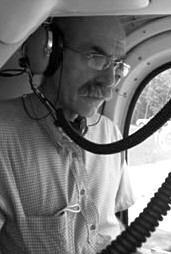
Although an ornithologist by training, Tim Reed has a background in monitoring and data quality- starting with standardising management planning and data recording for the statutory sector, moving on to developing the widely-used Common Standards site condition model.
After a long period introducing peer-reviewable data and biodiversity and ecosystem reporting models in big corporates around the world, Tim has spent the last few years working on data quality and the truly incredible material produced in support of development proposals in the UK.
Comments and issues appear regularly in his blog.
In 2020 I had fully intended to do a ‘proper’ set of bird records for my local nature reserve. As a small once-abandoned eyot in a lowland fenland river, its mix of sedges, willows and grass patches is home to a range of residents and seasonal migrants. Just the place to monitor for the summer.
The covid 19 pandemic had other plans. Suddenly, the access to the little island in the stream was closed. The owners- a local authority- stopped access for all but a chosen few. Even these, the members of the support group committee that does much of the management work, were limited. The result: an island, birds, but no access.
Fortunately, the eyot is only 15m across a channel from a pathway and flood defence walls that flank its willow, sedge, and reed-lined eastern banks. That means that it is within sight, and, more importantly, sound, for those excluded by the locked gate on the ornate bridge that allows/prohibits access.
So, I swapped what might be called 3D recording: walking , seeing, and listening on the crossways that zig zag the eyot, replacing them with 2D viewing the single face of the eyot from the nearby banks, aided by sound.
What constituted a record was simple: birds seen in the veg on the island: easy enough for the sedges, willows, and reeds just metres away, those that flew over, and those that poked around on the water within 2m of the far banks. That allowed in herons, coots, moorhens, and ducks, plus cormorants.
So far, so good. What started off as a jaunt for a month or two has turned into a dawn record every few days – except for the heaviest of rains – across a year, and counting.
The seasons saw/heard the arrival of warblers, the birth of thrushes, the hunting of kingfishers, herons and cormorants, and the passage of flycatchers. All from a pathway 15m away.
What did I miss? That became apparent when the ringer that operates there was allowed to return. I did not join in, as I do normally, as covid restricts distance, handing rings or birds, or swapping net poles. But it did allow me to have a blind control. He caught goldcrests that I never saw or heard, and a woodcock that I missed. Otherwise, my proxy list was similar.
If I was picking up what was there, then it proved a handy yardstick for the effects of flooding. On the floodplain, in most winters there is a bit of ebbing and flowing nibbling the eyot. This winter it went under for 6 weeks. As water 1m+ deep engulfed everything, the river acquired trees and shrubs, and absorbed the land. With it went the ‘bottom dwellers’: birds that forage in the undergrowth and grassy glades. These were in the churchyard nearby, but not in the branches of the engulfed island. As the flood period crossed into that usually dominated by territory establishment and fights, it was intriguing to see if, or when, this would occur. The eyot was shunned for the duration. That made sense as in cold, short, days foraging is at a premium, and defending what you cannot see is costly. That could be a calamitous investment if you get it wrong. Only species that could swim, or use the high branches, or flew over to dry land, were recorded.
Now the flood has ebbed, and the bottom dwellers are back, and fighting. Access has been restored for me, too. Nonetheless I will continue the proxy counts, but supplement them with my own in-person counts on the soggy island, and, in time, re-join the ringing. It would be good to catch that Cetti’s warbler that I heard but never saw across the last 12 months.
Any lessons? It seems that a decent pair of ears, and binoculars, can supplement in-situ visits reasonably well, and also fill the gaps in the year when I cannot do my nightingale survey nearby.
[registration_form]
This reminds me of ‘Birds in a Cage’, Derek Niemann’s book about four birdwatchers in prisoner of war camps. Of course their lock down was more severe and they didn’t have access to optics. Our little team of surveyors had to stop after one visit to a newly accessible part of our local reserve last year. This blog brings back the bereft feeling of being locked out as well as down.
Just wondering about the impact of the absence of human (and man’s best friend) disturbance on your study.
I suppose you realise you have to do it all again in ‘normal’ conditions.